The complete beginner’s guide to strategic email marketing for fitness + yoga businesses
Did you know email is still one of the most effective and lucrative tools for marketing?
And the hardest part – collecting email addresses – is actually easy for most studios, since your clients fork it over when they sign your waiver. Lucky you.
Email marketing isn’t dead. On the contrary, it’s alive and well – if you know how to play the game.
You have to know and leverage your biggest weapons. Weapons like
- How 50% of users open your welcome email, versus 10-15% for all other studio emails (so your welcome email MUST knock their socks off),
- 54% of users read their emails on their phone, and users check their phones up to 150 times a day, and
- 82% of emails are skimmed. If you know how to capture the reader’s eye, you can dramatically increase clickthrough and revenue.
This guide will help you own your weapons. I’ve divided this guide into four parts.
In the first two chapters, we’ll get clear on why email, why now, and why most studios are completely screwing it up – leaving thousands or even tens of thousands of dollars on the table.
In the next two chapters, we discuss how to automate the single most important marketing funnel in your business.
If you only take one set of actions from this guide, take the actions from chapters 3 and 4.
The final three chapters focus on promotions, sales, and reaching more people.
A good promotion requires awareness, excitement, and urgency to act – and when done correctly, it’s possible to double, triple, or quadruple your cash grab.
This guide is thorough. It’s also difficult to swallow in one sitting – so you can snag a PDF version for reference if you like.

THE MAGIC YOU’LL LEARN
You’ll learn how to leverage email marketing for your studio in a way that is compelling, not lame.
You’ll gain confidence in why you email your community, rather than it just being an annoying weekly task.
More of your new students will convert to members or regulars, because your automations will give them a killer first impression in their first 30 days with you.
More members = more community, more fun, and more revenue.
THE MAGIC YOU’LL CREATE
You’ll tell the incredible stories of your studio to new students, on autopilot.
You’ll condition readers to actually read what you write – not just in emails, but also in your social channels – because what you share makes an impact on their health on their lives.
You’ll also be able to leverage your best campaigns in automated sequences – winning over prospective members again and again on autopilot.
Five short sentences about me

Hi, I’m Nick Wolny. I’ve lost 105 pounds and kept it off for 14 years.
So, like you, health and fitness have had a major impact on my quality of life.
In a nutshell, I help gyms grow. I help fitness and yoga studio owners market to their community; when your marketing is dialed in, more people live happy healthy lives.
The Tantalizing Table Of Contents

Chapter 1: The three fatal newsletter mistakes you’re making in your fitness busines
- The science-backed reason people buy off email, not Instagram or Snapchat
- Fatal mistakes that choke studio revenue like crazy
- The one REAL reason no one opens or clicks on your newsletters

- How to make EVERY new client feel warm, fuzzy, and ready to buy again
- The exact structure of a killer new client offer

- A review of which email providers will make your studio sing (and which will make it SINK)
- Considerations for all my MINDBODY users in the house

- How to know you’re empowering students via email (instead of nagging them)
- Crush writer’s block and generate endless ideas with this one stupidly simple tactic
- BONUS: The exact organizational calendar I use – and how I use it

- Who flash sales and promotions are really for (hint: it’s not everyone)
- How to run promotions all year long without cheapening your brand

- How a second touch point for email newsletters can double your revenue
- This Facebook Ad Expert’s secret sauce for local businesses
- Uploading your email list to Facebook for Facebook ads

Chapter 7: The only metrics you ever need to worry about
- “What’s a good enough open rate?” And other deep life questions
- Other magical spells I use to maximize revenue from email
Chapter 1:
The three fatal newsletter mistakes you’re making in your fitness business
The average person receives 122 emails a day. And it’s a whole mix of information.
You’re getting important stuff like flight itineraries and manager meeting updates.
You’re getting temptation emails from brands like Buzzfeed, MindBodyGreen, or Elephant Journal.
And then there’s all the other stuff you just don’t have time to sort.
It makes you wonder: does email marketing even work anymore?
The science-backed reason email is king
The answer is yes. Email marketing gets a return of $40 for every dollar spent.
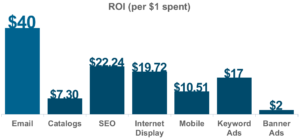
And while social media is a critical tool for health and fitness entrepreneurs, email pretty much kicks social media in the face when it comes to making those dolla dolla bills:
How is this possible?!
If it seems impossible, it might be because you’re making one (or more) fatal mistakes with your email newsletters. Let’s discuss.
Mistake #1: Not actively building your email list
Maybe your following is on Facebook or Instagram or Twitter or YouTube. That’s a great start, and many people discover our brands through social media channels.
However, these people follow you through a platform designed by a private company – which has unlimited power to squash you or change the rules at any given moment.
Tomorrow, Instagram could say “Starting now, it cost $100 to post something. Proceed.” Then what would you do?
Or worse, your platform could be inexplicably erased – like what recently happened to a peer of mine:
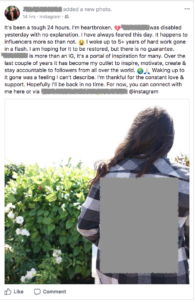
5 years of audience build, gone in a flash. Poof.
In an email list, however, people volunteer their private contact information, and you will always have it. You’ll always be able to reach these addresses.
And for those of us who work in the health and fitness industry, email feels less cool, less real, and less visually appealing than social media or other channels.
Here’s the thing, though – we receive important information in emails and we know it.
When people open and read an email, you have their attention.
This is not true for more distracting platforms like Facebook and Instagram, where you can mindlessly scroll – attention is questionable.
Yes, attention is important in marketing. But just jumping up and down isn’t enough.
People eventually see right through the instagram filters and fancy video transitions – unless you successfully communicate information in a clear, understandable way.
Communication is what can make your next class pack sale a $10,000 cash grab, rather than a $2,000 cash grab.
Communication can attract and seduce top instructors, top staff, and more clients who are happy to pay top dollar.
When you command people’s attention through powerful communication, you deliver on helping your peers live longer, healthier, happier lives.
Mistake #2: Not valuing their time
One could make the argument that a weekly email to your list makes your name more visible, and that you want that visibility.
So you ship out a weekly email, even if you don’t have any news, just to do it. Whatever.
I disagree. When your email content is boring, your readers will tune out.
They stop caring after a while, because you’re not providing them with enough value. You lose them. Or worse, they care too much and write wayyyyyy too much.
I’ve seen it 👏 SO 👏 MANY 👏 TIMES.
A business owner who is emotionally invested in their business will send emails that have paragraph upon paragraph of aspirational drivel that just doesn’t go anywhere.
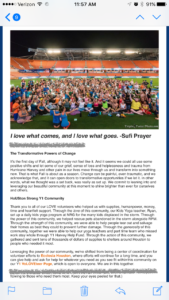
Yes, your most committed followers will read every word. But many people will drop off because reading this much text on a phone is too mentally exhausting.
When you take the paragraph approach above, and then later want to communicate something valuable and important, no one is listening, and your message falls onto deaf ears.
You later look at your open rates for your emails, and they’re disgustingly low.
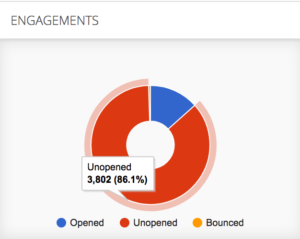
Ugh.
The clicks are even lower.
No one is reading your heartfelt statements, let alone taking action.
If only you were able to double that open rate on your next sale email, you would actually DOUBLE your revenue.
Or if you could only double the number of people who clicked the button in your email, you’d also DOUBLE your revenue.
Too often, people feel they need to get MORE clients in the door, from MORE places, everywhere, all the time.
I challenge you to reconsider the situation, and instead focus on how to get more of your existing audience to act on your promotions.
In all of my guides I reference this quote by Jeff Eisenberg:
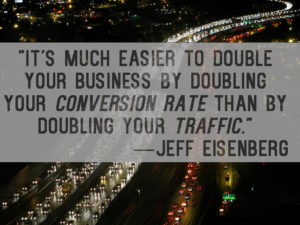
Instead of investing in billboards and PR, focus on engaging converting more of the people you already have to increase your revenue.
Mistake #3: Only selling and never educating
“But how do I get people to even open and read my emails”, you ask?
Have the majority of your emails share powerful, helpful, easy-to-read content.
Focus more on GIVE than TAKE.
This will train your subscribers to actually open your emails – and you’ll have their undivided attention.
They’ve learned that when they open your emails, it adds value to their day. They learn more about how to eat well or move their body correctly. They become more engaged.
Then, when you DO send an email selling something, you have a way higher open rate – and way better sales.
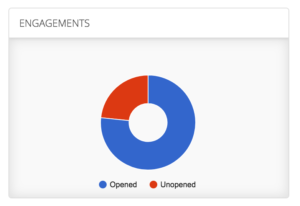
Recent results of an email sent to our most engaged students
If you only sell, you condition people to stop listening.
That said, when it’s time to sell, it is time to SELL.
Mike Arce is an entrepreneur and the founder of Loud Rumor, a 7-figure advertising agency that works specifically with fitness businesses.
His content is fantastic, and he often speaks to the skill of sales for studio business owners. A quick sample of his work to whet your appetite is here.
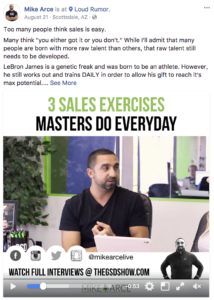
Mike interviews masters of the craft like Grant Cardone, but also interviews people very specific to our industry, like Rick Stollmeyer, the CEO of MINDBODY, with a very watchable and enjoyable interview style.
He has a show called The GSD Show, which has both a YouTube channel (pictured below) and a podcast format.
I definitely suggest you follow Mike and Loud Rumor’s efforts if you’re serious about growing the revenue of your fitness or yoga studio.
Now that you have these three mistakes out of the way, let’s talk about what happens when you have new clients come through the door.
Ideally, new clients would all have the same experience – a great experience. We want to standardize the new client experience as much as possible.
Luckily, on the digital side, there’s a way to do that – and I’m about to show you how.
Chapter 2:
How to digitally roll out the red carpet for every new student (and double your clients in half the time)
I bet your business has an amazing, inspiring story behind it.
Maybe for the first year, you ran the studio out of your garage.
Or maybe you were a lawyer/accountant/desk jockey for one too many years, and you couldn’t take it anymore, so you had to jump – even if it meant there wasn’t a safety net.
I bet your instructors and staff have amazing stories to tell, too.
They played college sports, they’ve beaten cancer, they’re former ballerinas, they’re superparents, they’ve lost 80 pounds, they’re 21, they’re 65, they want to change the world.
They get this fitness and community thing.
And don’t even get me started on the stories of our clients – wow.
They met their fiancé at your studio…. And then proposed to them.
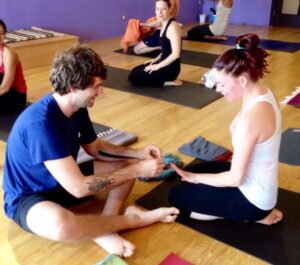
“Namaste…. Now marry me.”
They’ve made friends in a city they just moved to when no one else would talk to them.
They’ve beaten addiction and other vices, and turned their life around.
Because of you.
It’s time to ensure these stories are read and heard.
*
We LOVE inspiring stories.
But you don’t want to repeat yourself. You want a way to get these transformations in front of your new clients, who will be hearing them for the first time.
In this chapter, we’re going to tell these stories and captivate your new clients…
on autopilot…
using an automated email sequence that will tell your stories for you.

Um, WTF is an “automated email sequence”?
Great question.
In an automated email sequence we “drip” a series of pre-written emails to subscribers after they have subscribed.
We also set up how far apart we want to drip our emails. It could be a day, a week, a year, and so on.
Here’s a scary diagram:
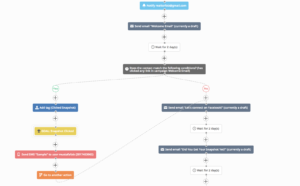
An example of email automation I have for a client.
Don’t worry – good email service providers like ActiveCampaign are actually very user-friendly.
A client enters an automated email sequence when they’ve taken an action, such as when they sign up (or when you sign them up) for your newsletter.
No matter what time of day they sign up, the sequence will carefully and cleanly drip pre-written emails at exactly the frequency and time of day you desire.
In this guide, we’ll mainly talk about a new client sequence. This sequence educates new clients on the “why” behind your studio – they fall in love with your story.
They are then invited to commit to a membership while they’re really pumped up.
How to make your new clients feel warm, fuzzy, and ready to buy again
It seems counterintuitive that an automated experience – emails sent by a cold, lifeless machine – would be the key to warm fuzzies and tugged heartstrings.
Consider the following:
Over 50% (and as many as 90%) of your audience will read your welcome email. So your first impression really is tremendously important.
After that, email open rates drop steadily, before landing around 15-20% for most businesses.
Once you hit that skid, it becomes wayyyyyy harder to share your inspiring story and the stories of the studio, because 4 out of 5 people on your list don’t open your newsletters.
By crushing it on your first impression and first few weeks with a new client, you set yourself up for success.
“Why can’t everyone just get the same email?”
You wouldn’t expect to go on a first date, and then drop the L-word and assume your date is ready for a long-term relationship. That’s coming in way too hot.
Similarly, you wouldn’t say “nice to meet you” to a friend who’s known you for years and has seen your ups and downs.
You tailor your communication to what is appropriate for the person you’re speaking to.
We want to cultivate that in our email marketing as well.
Everyone is in your sales funnel – which probably looks something like this:
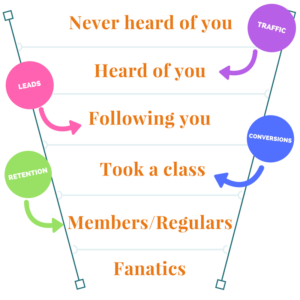
Using automated email sequences, you’ll provide the right communication for where people are in your sales funnel.
How “a few more members each month” adds up
In my ultimate guide to Facebook Ads for studios, I used a calculator to show the huge financial impact that can be made when just a few more of your new students convert to membership each month.
An automated email sequence that goes to all of your new clients is called a nurture sequence – and it’s a fantastic way to convert more first-timers into members.
Membership signups do happen organically, yes – but by digitally rolling out the red carpet for each and every new student, you’ll persuade way more people to try you out again and again.
Jon Taffer, a restauranteur who has helped revitalize bars and restaurants for many years, discussed the power of repeat touches with Gary Vaynerchuk on an episode of his show AskGaryVee:
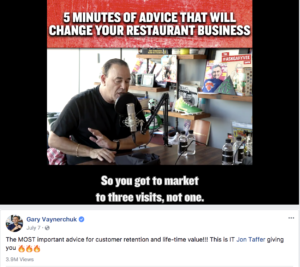
The one type of fatigue even worse than overdoing leg day
Now, what will your nurture sequence guide people to? What’s the ONE thing you want them to buy next?
A lot of studios struggle with this. Their answer is “well, anything!”
Then they market that way. They give new students a hundred options. Their pricing looks like the menu of a Tex-Mex restaurant.
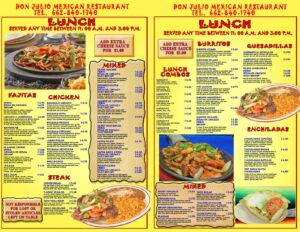
“Now, act fast and make a decision!”
Fewer people become members because they’re paralyzed by decision fatigue.
It’s the same fatigue I experience at every Tex-Mex restaurant, before I finally give up, point to something pictured, and say “I’ll take this one, please.”
Think about your sales funnel. What is the ONE ideal path you want clients to take?
To help define your one ideal path, answer these questions:
- How do people find out about my business?
- What is the obvious first thing to purchase?
- What is the obvious next step after an initial purchase?
- How do I make that next step a financial no-brainer?
68% of businesses actually don’t have their sales funnel defined. So, first things first – define that freaking sales funnel!
Once you have your core sales funnel dialed in, it will become really clear that your nurture sequence (and all of your new student marketing, really) needs to point toward that one offer.
Your nurture sequence mirrors your sales funnel
Let’s keep it really simple to start and stay at a 10,000-foot overview.
Here is an example of a nurture sequence that guides clients toward membership.

There are three phases to a nurture sequence – let’s look at each.
Core elements of a nurture sequence
The start of your nurture sequence
A nurture sequence begins with a thank-you email for signing up or purchasing the new student special.
As mentioned before, most businesses just send an automated confirmation email and move on.
FATAL MISTAKE.
Here’s the thing: Your thank-you email needs to set the tone for how high the quality of communication from future emails will be.
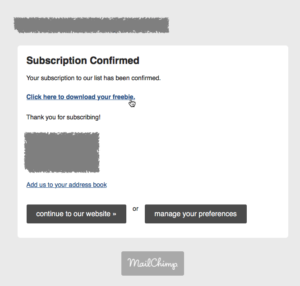
The tone you’re setting with me is that you’re going to be REALLY boring.
The end of your nurture sequence
Your nurture sequence should end with a call to action.
What’s the next step for people who are hooked and have been reading this whole time? Where does your sales funnel direct them?
For most studios, your call to action is signing up for membership.
Let me offer some quick coaching on your membership pricing. Elements of your membership offer that create stability are:
A specialty price – access to a monthly rate that clients can only get if they sign up before the end of their introductory offer.
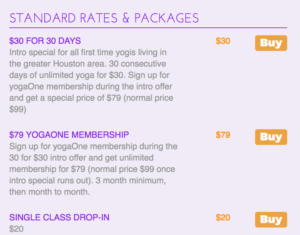
In this example, you can lock in a $79/month rate (instead of $99/mo) if you sign up during your intro special.
A commitment runway – offer your membership as month-to-month, and request a 3-month minimum commitment to start.
The example above also illustrates this.
- You can use your discretion with how firm to be on this – someone may genuinely be relocating or find out they’re pregnant, and can’t fulfill on their three-month commitment. Let them off the hook and don’t be an asshole.
- Most people will honor staying on for a minimum of three months because they are ethical.
Some studios do a 12-month contract for membership. It’s not my preference, personally, because it’s a big commitment ask.
Month-to-month feels more flexible for the first-time member, and once they know they’re hooked (and won’t be moving anytime soon) you can upsell an annual pay-all-at-once membership, which gives you all the revenue upfront.
The middle of your nurture sequence
You’ve got your bookends dialed in.
Now let’s talk about the middle of your nurture sequence – the part that tells your story and nourishes your new clients.
Have the middle of your nurture sequence focus on content. Here are a few different content categories to get your gears turning:
Methodology: Why your classes are the way they are, why they get your clients results, and why your system changes bodies and minds in a way that other systems don’t.
Motivation: Introduce me to your instructors and your staff. What makes me want to get to know them better?
Inspiration: This is my favorite content to create. Feature your amazing client testimonials and teammates.
Now, your instructors are great. But if they all played college sports or did gymnastics for 20 years growing up, you need to balance their narrative with stories of mortal humans like us.
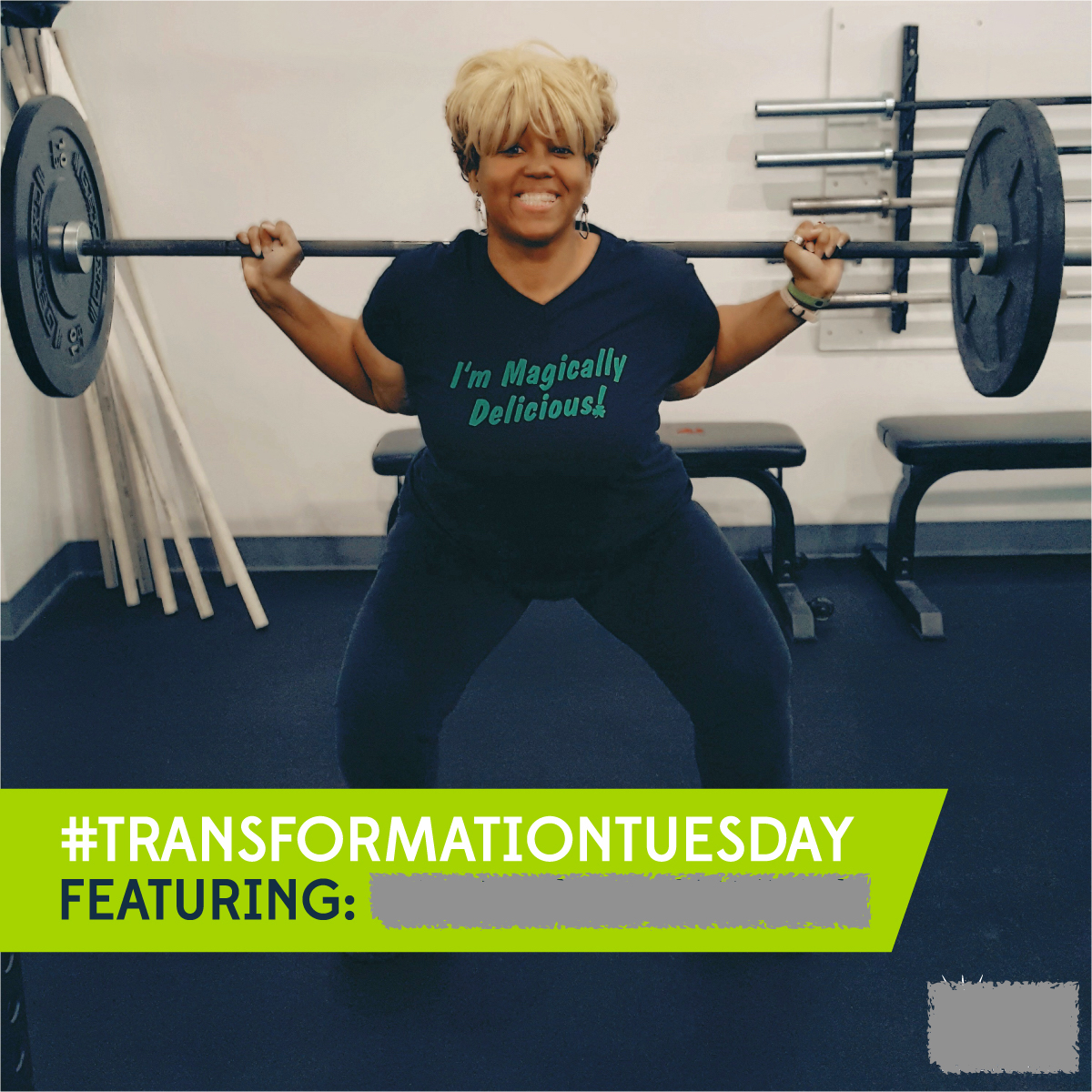
New clients LOVE reading about your happy healthy community.
Price framing: Save this content for your final week, when you’re actually pitching to your clients.
Is your membership $200/month? Explain to me why that is actually the best financial option.
The length of the nurture sequence is the same as your intro offer.
I recommend you send an email once or twice a week during the nurture sequence.
During the final week of their offer, you can throw in an additional email as a “rah-rah” last chance email to remind people that time is running out.
Let’s look at a couple of examples.
Example nurture sequences
Here is how a studio that has a two-week introductory offer might structure their nurture sequence:
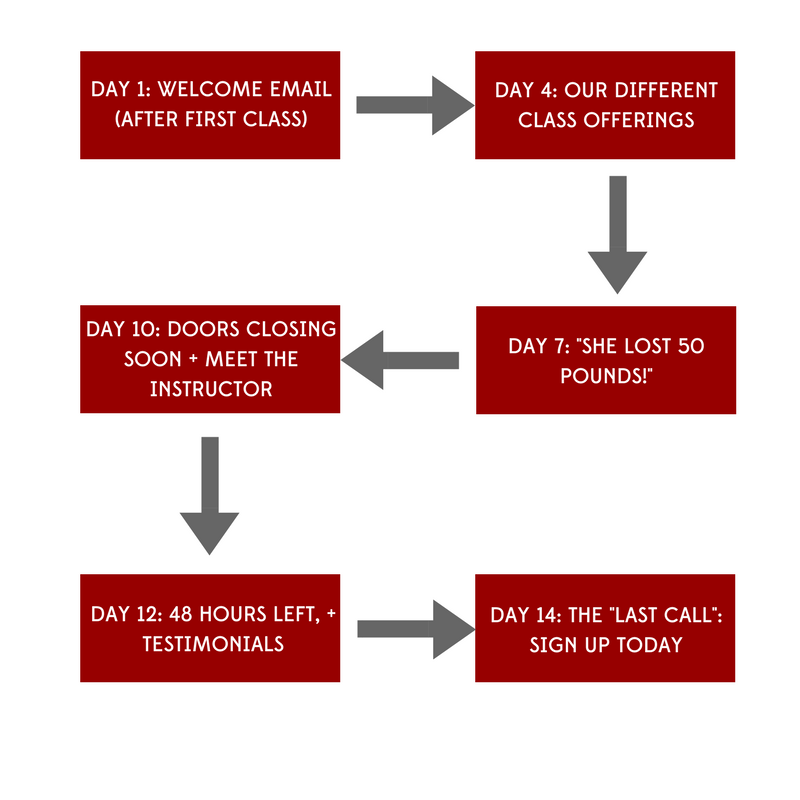
For a studio that has a three-week offer, the structure is similar, albeit a little more beefy:

You get the idea.
In any nurture sequence, communication becomes more frequent as you accelerate toward the sale.
“But what if they’ve already signed up for membership? I don’t want to pester my new clients.”
No worries – we foolproof that situation later on in the guide.
*
Whew! This was one of our biggest chapters – great work staying with it.
A nurture sequence takes time to build, yes – but once it’s all set up, it works for you over and over and over again.
We’ll stay laser-focused on nurture sequence in the next two chapters to help you build momentum.
In chapter 3, we tackle how to actually set up your nurture sequence with your email provider.
Then, in chapter 4, we’ll zero in on what to write so you don’t bore your people to death – even if you suck at writing.
Chapter 3:
How to choose an email service provider (and never throw your laptop across the room again)
Think about the last time you saw a car commercial.
You were shown features about the leather interior, the hands-free bluetooth, and the tinted windows. These are things that you, the consumer, interact with regularly.
What you hear about way less is the powerful engine itself – a feat of engineering that will propel you to your destination for twenty years to come.
Hundreds of millions of dollars go into the engineering of a luxury vehicle – the structure, the engineering, the design – and when it’s doing its job, you notice absolutely nothing.
This is the less sexy part of car marketing – and marketing in general.
The same is true for the nurture sequence in your business. That’s why most small business owners just never even bother.
But not you.
If you’ve made it this far, I assume you now notice the massive gold mine right beneath your feet.
In chapter 3 we build our engine.
Then chapter 4 explains how to write slam-dunk content and eye-catching details that will make people give you their attention – and go on to buy.
Two tried-and-true email service providers
There are a zillion email service providers out there.
For the purposes of this guide, we will focus on two that lend themselves best to studio owners: Mailchimp and ActiveCampaign.
There’s a reason MailChimp has nine MILLION users. It gets the job done, and is free to start using.
Advantages:
Mailchimp utilizes a pricing structure called “freemium”.
A freemium service is free to start using. Then after your business reaches a certain size (for Mailchimp, it’s 500 subscribers) or you want more features, you start paying per month.
This strategy is very popular, because businesses get used to using a freemium service like Mailchimp, and then when it’s time to start paying it’s just easier to stay on a platform you’re already familiar with.
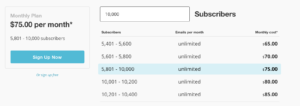
Mailchimp’s pricing goes up as you grow, which is common for most email service providers.
Mailchimp’s email editor is also one of the best in the biz and very easy to use.
In Mailchimp, the different ways to start automations are called triggers.
The most obvious trigger is when a new client gets signed up for an email list. Other triggers include when a client hasn’t opened an email in a while, when it’s a client’s birthday, and so on.
A great article on the MailChimp website that shows all the available triggers is here.
Drawbacks:
If you’re using MINDBODY, you need to have a Pro membership or above to connect MailChimp.
Mailchimp also has very basic automation setup – which is what a lot of this guide is about.
If you need to tweak an automated email sequence in Mailchimp, or want to test something different, you have to turn your automation off and back on to do that.
Also, if you like to organize your clients into multiple categories – a regular email list, a list of people who signed up for a challenge, a list of members, et cetera – Mailchimp will count the same person as 3 people, since they are on 3 lists.
This causes you to hit the next highest billing bucket sooner.
If you choose to go with MailChimp, a blog on how to set up your automated email sequence is here.
For me, ActiveCampaign is to Mailchimp as Apple computers are to PCs.
Yes, I’m paying more. But I’m happy to pay that premium to have smooth design, ease of use, and seamless integration.
ActiveCampaign also integrates smoothly with MINDBODY, the predominant customer management software for studios. It’s a fairly new integration (Fall 2016).
ActiveCampaign boasts a really robust engine, and you’re able to see everything your clients do and how they interact with your emails.
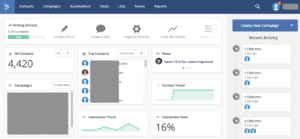
Activecampaign features a customizable dashboard.
I personally use ActiveCampaign and I LOVE it. Maybe it’s because I played with Legos all the time as a kid, and ActiveCampaign feels like playing with Legos.
You can create flowcharts and conditions around your different sequences. I LOVE this because it becomes very easy to visualize everything. Your automation will look like this:
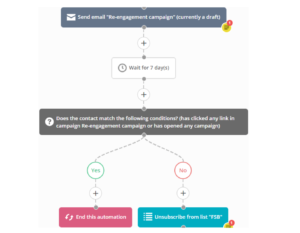
You can learn more and do a two-week free trial here.
Advantages:
With ActiveCampaign, you can build automations that are silky-smooth and easy to see. The trigger options are also very clear.

You can also adjust an automated email sequence after it is live, even if there are already people in it.
Another advantage to ActiveCampaign is that it has some fancy features like site tracking.
Essentially, ActiveCampaign can see when a client has landed on a certain page of your website (such as a page after they’ve purchased a pass or checked into a class), and can take actions accordingly.
Wouldn’t it be cool to know exactly which subscribers have checked out your “1-on-1 personal training” page? Or your teacher training certification page?
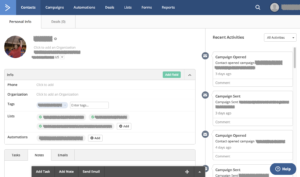
A third advantage to ActiveCampaign is that it has killer customer service in my experience.
They have a help desk you can chat with, and if you open a help ticket, their response includes a video of a screen that shows you exactly what buttons to press.
Pricing for ActiveCampaign actually starts at $9/month, but you likely need the Lite version for your basic features, which starts at $49/month.
If you’re considering a switch from Mailchimp to ActiveCampaign, you might like this crisp and detailed breakdown by design influencer David Kadavy here. I did.
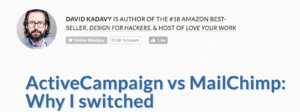
Lastly, a little teaser on the MINDBODY integration is here.
Alright – once you have an email provider set up and the skeleton of your nurture sequence made, it’s time to fill those emails with fantastic, best-in-class content that moves you to the front of the line.
Chapter 4:
Bad news: You hate writing. Good news: These 4 quick tricks revive even the deadest emails and blogs
Now that we have a killer engine, we want our content and our storyline to be engaging and persuasive.
Otherwise, no one will bother to open your emails or get the amazing information that helps them live a happy, healthy life!
What often happens here is that we get slammed by writer’s block.
Or we’re trying to stage a fancy photo at the last second for our newsletter.
We cobble together some details, it takes an entire afternoon to stage one freaking photo or knock out one paragraph, and we don’t really even know if it made a big difference.
Let’s talk through four tweaks that will make your email content pop.
#1: What to write: The most inbox-friendly topics
In contrast to social media, which is about adding value in a fleeting moment, email content can go deeper and be more informative.
People are also used to reading emails for important information – bills, itineraries, invoices – so they give email a little more weight and attention.
Below are three topics that lend themselves well to email. The first two are especially good for nurture sequences, and the last is good for general list engagement.
Earned Media
Earned media is any media or PR in which you are featured by another source. This includes things like testimonials and user reviews.
Earned media is different from owned media (your website or social channels) or paid media (commercials, print ads, or online ads).
Earned media is considered to be very powerful, because it is trustworthy.
However, earned media can also be a double-edged sword – a nasty Yelp review is also earned media.
If you have a cool media spot or feature coming up, your people would love to hear about it, and your email content can point to this third-party feature, which builds credibility.
For example – in my nurture sequence, I mention that I’m an early-to-bed, early-to-rise kinda guy. Fair enough.
Instead of just sharing that fun fact though, I point to some media I was able to get in SUCCESS magazine, where I speak to my early-riser lifestyle as a tool I use for success.
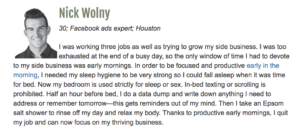
The same information has much more credibility when you’re been featured by a news source or magazine.
Since people in your nurture sequence are just getting to know you, your engagement emails can and should lead with the most impressive media spots you have ever achieved.
Testimonials and Team Features
Team features can double-down as blog content.
Spotlight your instructors, and go a little deeper. Maybe you have a series where you ask ten questions.
This helps to make your instructors (especially your jacked bodybuilders or contortionist yogis) more relatable.
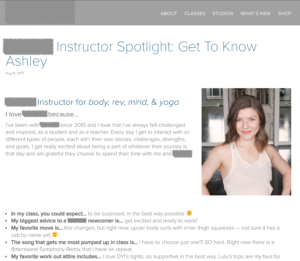
Upcoming Events
People plan their week, month, or year using the information they get in emails – so sharing your events in the upcoming months (some of your people like to plan way ahead) can help lay the groundwork for fuller, more lucrative workshops and trainings.
The events on the next page were MONTHS away, but kept me in the know.
Obviously, this wouldn’t be an option for your nurture sequence, since you want that chain emails to be timeless.
If you’re a newer business, however, it’s always helpful to maximize your location and what else is in the neighborhood.
This is also an easy way to create cross-promotional relationships, or build toward a collaborative event.
#2: How to write, part I: Kill the paragraphs
I’ve got bad news.
When we read text, 79% of us don’t actually read the words on a screen on the first pass. That’s nearly 4 out of 5 readers.
Instead, we scan the screen quickly.
We look to see if the information we want is on the screen.
If we confirm that the information we need is somewhere on the page, THEN and ONLY then will we begin to read actual words.
This style of reading is called F-Pattern, because your eyes move in the shape of a capital letter F.
F-Pattern is derived from a famous study from the Nielsen Group if you want to nerd out further.

These heat maps show how our eyes move (and where we click) when reading screens.
Keep your paragraphs to 1-2 lines in length, and ensure that you’re not writing big-ass paragraphs when you write emails. Paragraphs lose people.
Again, take the example below:
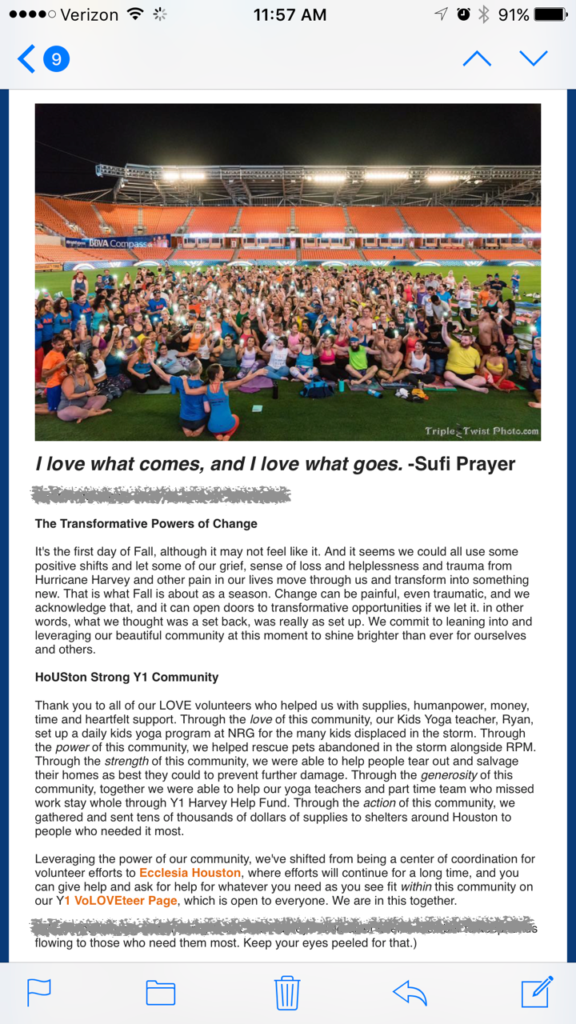
Emails like this come off as intimidating.
Who has the patience to read long paragraphs on their phone?
“Mobile-optimized”, a buzzword five years ago, is already an antiquated term.
You actually want your email marketing to be “mobile first” and “desktop-optimized” – assume most of your subscribers will read your email on their phone.
Adjust your images, links, and text accordingly.
This alone will make a big difference in how many people actually hear your message.
#3: How to write, part 2: Headlines as images
To further break up bodies of text, consider turning some of your headlines or core ideas into graphics – like this:

These images can also be repurposed for blogs or other pages of your website.
You could also take an announcement or class update, turn it into a square image, and use throughout email or social media. Kinda like this:
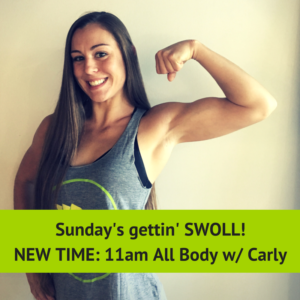
You’re repeating information, but presenting it in a way that breaks up the blocks of text.
In this guide for example, I try to have one image on every page of the PDF.
If you have a graphic designer, you’re a lucky devil and you’ll be able to kick these out quickly. For quick announcements and updates though, I just use Canva.
Canva is a user-friendly drag-and-drop image editor. You’re able to upload photos, add text, and create images that are the right container size for what you’re looking for.
No more memorizing 625×318, 1024×768, and so on – Canva has it ready for you.
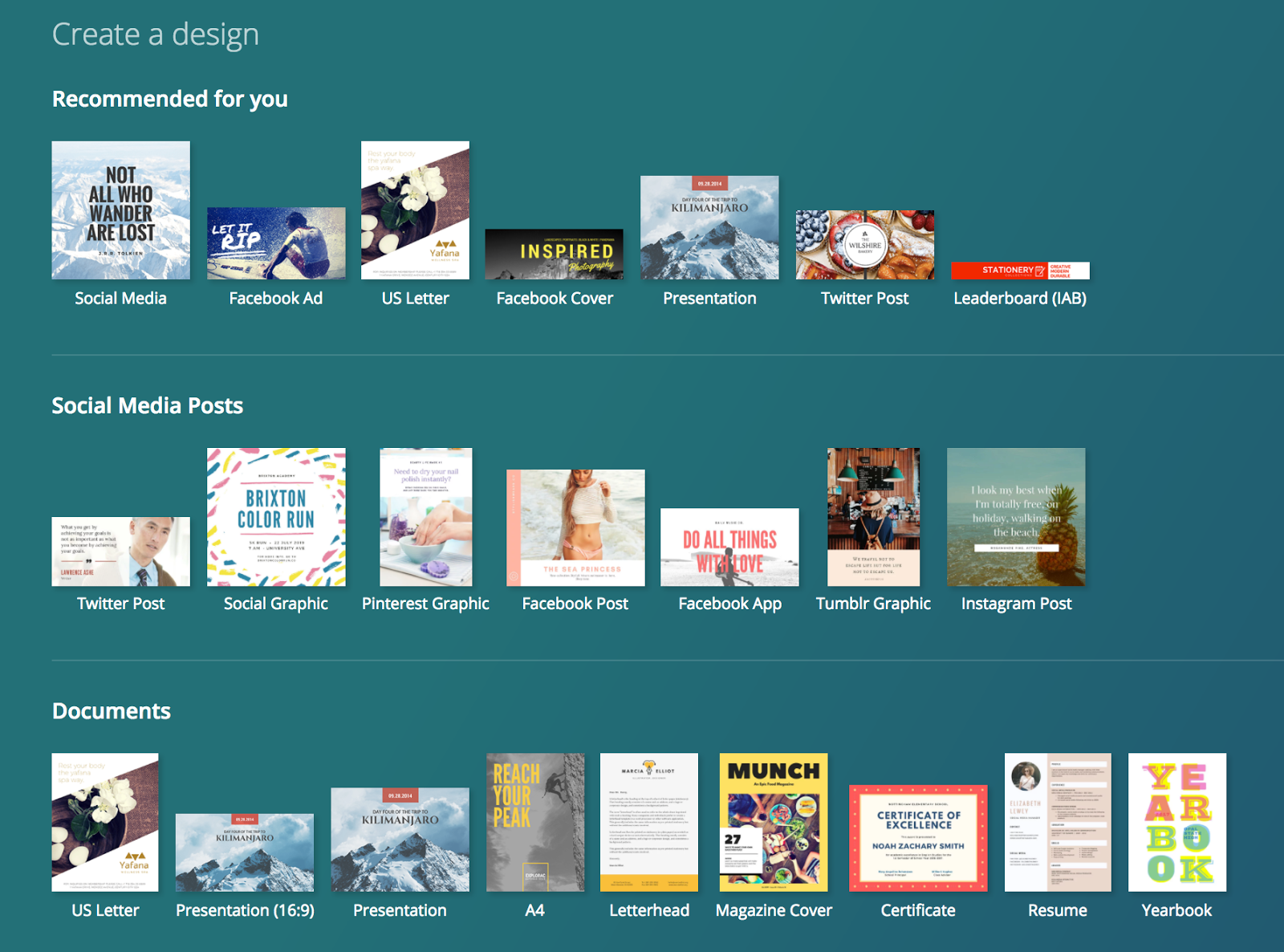
Design specifications are already done for you – just pick and go.
#4: P.S. with a call to action
If you have people who read to the very bottom of an email, they’re engaged – you might as well throw in a call to action.
Direct people toward small actions or large actions. Examples include
- Liking your social media channels
- Filling out a survey
- Replying to the email with their thoughts
- Links to your sales or products, or
- A link to other blogs or content.
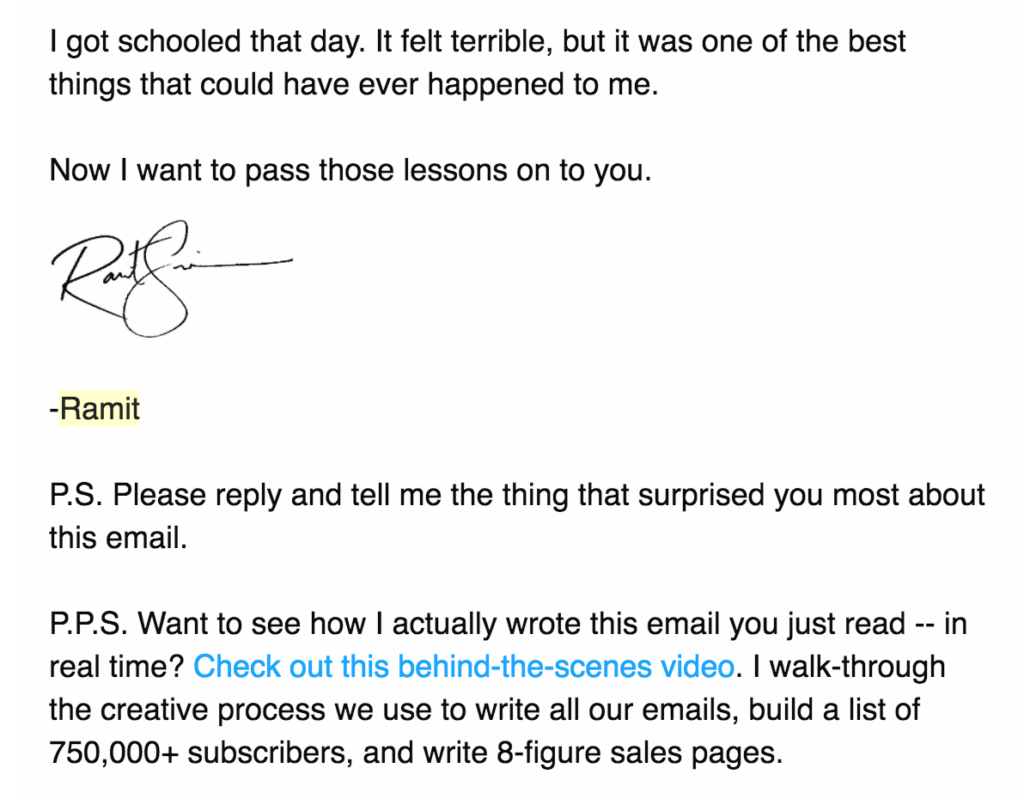
Ramit Sethi, a personal finance influencer, always ends emails with a call to action – often framed as a P.S.
Bonus: A free content calendar
I find it’s really helpful to plan out what you’re going to post in advance. So I have a “content calendar” Google Sheet for you – get it here.
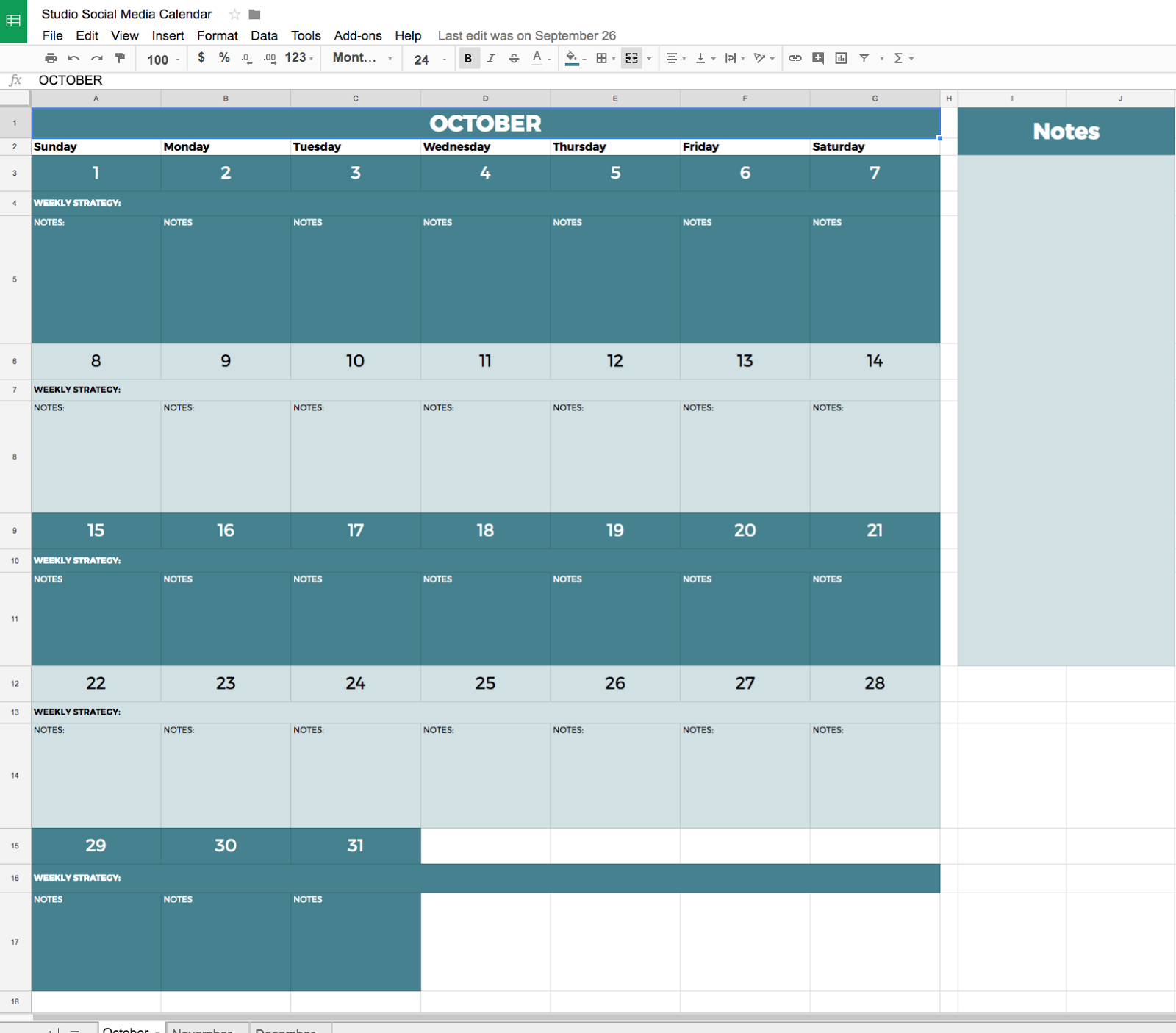
In this calendar, you’ll get
- Tabs for every month of the year
- A “weekly focus” row that helps keep you and your team on track with strategy
- Notes for each day, and a space for general monthly notes
This gives you time to block out any interviews, photos, or videos that you want to create.
You can also block out larger pockets of time to create content and cue it up. Consider blocking out time to write and prepare the content (and also some contingency time for if and when things go wrong).
A content calendar ensures that your marketing is strategic at all times – even when your schedule is just to have fun!
Chapter 5:
Quadruple the revenue from your next flash sale with savvy email launches
So we’ve got automations down. And now you also know how to create compelling emails people actually want to read.
Let’s switch gears and apply our newfound email savvy to your next promotion, workshop, or training.
A flash sale can be a great way to fill spots for your business and generate some extra cash.
It basically looks like this:

Kidding – kind of.
Use flash sales sparingly. Otherwise, you train your clients to wait for the next sale (and cannibalize your membership revenue as a result).
A well-executed flash sale will have an email strategy of at least three emails.
I like to call these stages the “heads-up”, the “open sesame”, and the “last call”.
The first step, the “Heads-Up”, is actually the step that most businesses botch.
In the heads-up, you get your audience in the right frame of mind before you actually make your mouthwatering offer available. (This is also called pre-framing).
For example, if I were to sell a 10-class punch card, my “Heads-Up” email (which I would send to people currently on a punch card) might mention the following:
- Coming more often gets you better and faster results
- Punch cards are great for people who need a lot of flexibility
- On Friday, we’ll be doing the last sale we’ll have for nearly a year
Wait – what?
You read that right – you’ll mention the sale that is going to happen, without actually making it available yet.
This strategy helps to build buzz.
You have to solve for procrastination. For this I use what I like to call an urgency trigger.
An urgency trigger is an element of your flash sale the forces people to purchase now and not later.
If they wait, they risk missing out on the sale.
![]()
The most common urgency trigger is a deadline. “Sale ends this Friday” is a good example, and is a good option when you’re going for the maximum number of sales.
Another example of an urgency trigger is to have a limited number of spots.
This makes deals hyper-urgent – but you’ll have a cap on how much you can sell in order to keep it ethical.
A possible “hybrid” solution is to offer an additional discount or bonus for a limited number of spots, then a less-discounted regular option.
My friends at Bar Method in Houston did this strategy when they first launched their 12-month package.
Because they pre-framed their audience with a “Heads-Up” email, they sold all early bird spots in ONE HOUR – generating $15,000.
They went on to sell a total of 22 packages in five days.
The “Open Sesame”
When you’ve done your email sequence correctly, opening the doors for your flash sale should feel like opening a floodgate.
You’ll have a few different audiences at this time:
First, you’ll have clients who saw the deal in your “Heads-Up” email and marked their calendar to get the details.
Some of them may even reach out prior to the sale and ask if they can buy now.
They have major FOMO (Fear Of Missing Out), and it’s a sign that you’ve hit the nail on the head with this deal.
Then, you’ll have clients who loosely recall the sale and the deal, but not the details.
Your “Open Sesame” email will remind them that the deal is happening, and they’ll hop in.
Finally, you’ll have people who totally missed your announcement for one reason or another.
It takes multiple announcements for some people to hear what the heck you’re doing – when they do though, they pull the trigger.
Pairing your “Open Sesame” with an event
For added reach and awareness, consider pairing your flash sale with an event. The event can be in-person, digital, or both.
In my guide on Facebook Live, I coach businesses to run a Facebook Live event in tandem with their “doors are open” email to generate additional buzz. The Facebook Live acts as a newsworthy novelty and is a break from the usual “yoga with a live DJ” event.
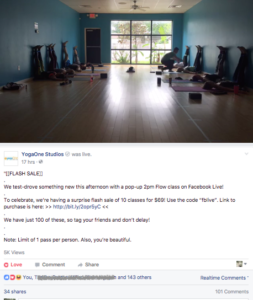
In this case study, my local yoga studio timed their “Open Sesame” to run in tandem with a livestreamed class.
In the case study from that guide, we only kept the cart open for 24 hours (and made $15,525). I personally recommend you keep your cart open for a minimum of 72 hours.
Why?
Well, some clients would actually love this deal, but need an extra day or two for your marketing to get in front of them.
Again, your email open rates are low. Never assume that your clients caught wind of your promotion on the first announcement.
The “Last Call”
When you have your cart open for an extended period of time, you’ll also be able to send a
“Kicker” email that announces that the cart is closing.
This is called your “Last Call” email, and it helps to drive last-minute sales and overcome procrastination.
You’re giving on-the-fence readers an ultimatum – and depending on the price point of your flash sale, this single email can drum up thousands of additional dollars in revenue.
*
Any additional emails or content that you layer in PRIOR to these three emails is a bonus – but you must have at least these three emails to deliver a strong flash sale.
For example, if you’re getting ready promote a high-dollar service (like a one-year membership paid upfront), you probably need to warm people up prior to your three-email flash sale.
It’s the same approach as a nurture sequence. The more warmed up and excited your audience is, the more likely they are to buy.
Chapter 6:
How to expand the reach of your newsletter promotions using strategic, inexpensive Facebook advertising
Now, you might be saying this to yourself.
“Wait – only 10-20% of subscribers even OPEN my heartfelt emails? This BLOWS.”
I suggest you upload your email list to Facebook, and use a Facebook ad to amplify your existing email marketing strategy.
You heard that right – you can upload an email list to Facebook, and then run sponsored posts that show JUST to the people that are on your list, keeping it relevant.
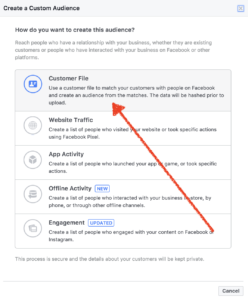
You’ll get way better bang for your buck when you do this.
Notice I use the word “amplify”. I often find people try to use Facebook ads to replace their marketing strategy, rather than amplify it.
We’re just using a Facebook ad to up the percentage of your list that sees your message.
For this guide, I’ll keep it on-topic and explain how to reach your already-existing email list using Facebook.
My guide on Facebook Ads goes into more detail on how to use ads powerfully for a yoga or fitness studio – if you want to go deeper, check out that guide here.
Setting up your Facebook Business Manager
Some of you have only ever boosted posts on your business page.
To target your email subscribers, you’ll need to have the Facebook Business Manager set up. Don’t worry – it only takes a couple minutes.
Not sure? Facebook’s Business Manager and Ads Manager have a grey-colored header and look like this:

This post will give you a clear and thorough setup.
Once you have Business manager set up, proceed to the next section.
How to upload your email list to Facebook
First, you want to export your existing email list into a CSV file (CSV stands for “comma separated values”).
In Mailchimp, go to “Lists”, click on your list, and go here:

In ActiveCampaign, go to “Lists”, click on your list, and go here:

I also want you to grab the web link of your email newsletter.
This is a link that people click on and it will open your newsletter as a web page.
In ActiveCampaign, you’ll find that link by going to the campaign itself and clicking on the title of the campaign:
Then, go to “Message” on the left. From here. Grab the link from the left-most button on the “sharing links” header:
I suggest you post your update (with email newsletter link) on your Facebook page first, THEN run your post as an ad. (You can schedule posts on a Facebook business page.)
Once you have your CSV file and your newsletter link, go into your “Ads Manager” page in Facebook Business Manager.
First, go to Campaigns, then click the green “create” button.
You’ll create a campaign, ad set, and ad. I just use the same name for all three for the purposes of this campaign.
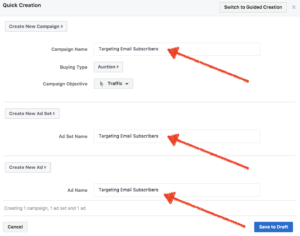
Once your campaign is made, you’ll click on the “Ad Sets” tab. Your ad set should already be selected. Click the Pencil button on the right side of the screen to expand the editor.
Scroll past budget – you can set that later based on how many people you want to reach and in what timeframe.
Instead, go to “Audiences”.

Click “Create New”, then “Custom Audience”. You’ll be here. Click “Customer File”.
Now we’re going to upload your CSV list directly into Facebook.
Once you’ve uploaded the file, Facebook will ask to map some of the data. When appropriate, assign each column to a data point that Facebook can look for.
Some of these will be already assigned, like “Email”, when it’s really obvious to Facebook what the data point is.
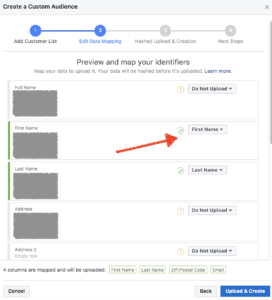
About 50-80% of your email list will cross over. It depends on whether Facebook can link your subscribers’ information to their user account.
The more data you can map, the better the matching.
Now you save as a custom audience! This takes Facebook about 30 minutes to complete fully, but you can set up your ad in the meantime.
Click “Done”, then go to the Ads tab and click on the pencil once more.
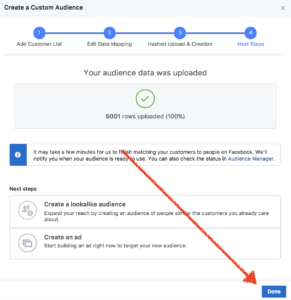
In the Ads editor, you have the option to create a post, or just advertise an existing post. I suggest you do the second option.
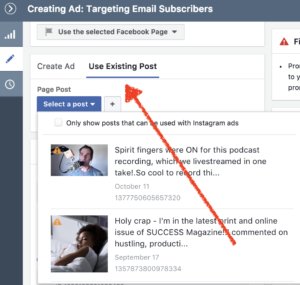
Voila! Your existing post will now be an ad that is shown to your email subscribers.
Remember to go back to the ad set and set your budget and dates to run the ad, and also your placements.
Once you’re complete, click “Review Draft Items” and approve!
How to use Facebook to amplify a flash sale
If you’re new to ads, or just want ads that will have the biggest bang for your buck, I suggest you target your email list whenever you run a flash sale.
Definitely run an ad at the same time you have opened the cart and released your “Open Sesame” email.
This ad spend is easy to justify, since you’re running a sale to an already-warmed up audience of people.
Re-engage former members via Facebook
Inevitably, you will always have people that fall off the wagon and cancel their membership. They’re also not opening your emails (even though they’re still on your email list), so you can’t reach them.
Use ads. Pull a report of people who don’t have an active membership and have not visited the studio in six months or more.
Run an ad just to these people, and offer them a steal of a deal. To have them redeem, have your phone number in the status of the ad.
Chapter 7: The only metrics you ever need to worry about
We’re nearing the finish!
Now let’s talk a bit about your numbers and how to adjust your strategy as you go.
When you look at your email campaign results, you’ll probably see numbers like this:
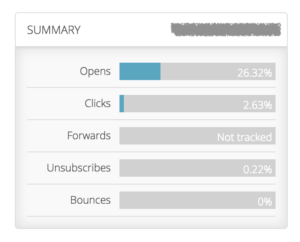
The numbers that we’ll focus on in this guide are your open rate (opens) and your click rate (clicks).
“What’s a good enough open rate?”
It’s a little bit of a loaded question.
As we mentioned earlier in this guide, your welcome email/confirmation email will have a really high open rate.
Here are the stats from my welcome email:
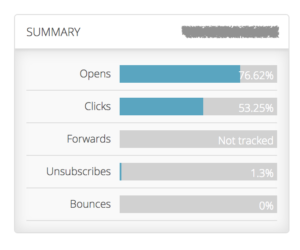
No other email even comes close in open rate to your welcome email. It’s a landslide.
For a lot of these people, this is the ONE TIME you’ll have the mic and be heard. It can feel like this:

So it’s REALLY good to spend some time on this email and make a strong first impression.
You may also invite new subscribers to take a small action, such as liking your Facebook page or sending them a free gift, like a PDF or a link to a workout video.
This audience just signed up (and for some of you, they just bought), so they’re hot for you.
Use the opportunity to have them follow your social channels and share a little bit about what to expect.
For your regular week-to-week emails, there’s a considerable drop in open rate and click rate. (That’s why I’m not a huge fan of weekly newsletters – it teaches your community to tune out, and you back yourself into a corner).
Here are some things you can do to improve your open rate and help spread the word:
- Cross-publish your newsletter on Facebook/Twitter (but with a cool graphic). We just talked through this in Chapter 6
- Brainstorm more catchy subject lines to make people click
- PRINT and post the email in your studio (bathrooms, bulletin board, et cetera). (This is obviously not online, but I find it gets people asking for more details.)
Open rate and click rate also varies by list.
Your full list will have lower percentages. You might consider creating some “sub-lists” at your studio (also called segments) and customizing your communications to them.
Suggested lists to have at your studio
I’ve listed these in order of importance and revenue potential, from my experience.
I recommend you have
Your full list
Duh. Obviously you already have this list.
A list of people who are members
If people are paying a recurring monthly membership to be with you, you might offer them special deals or events, or just communicate to them about specific updates that they the members would like the inside scoop on.
In any sub-lists or segments, I like to put brackets at the front of the subject line to make it clear what list they are on. For example:
“[MEMBERS ONLY] Sneak peek of our new schedule”
It’s clear and tells people that this is not your run-of-the-mill newsletter.
A list of people who attend your studio through a third party like Classpass or Groupon
I think this is a great sublist to have, because you can target just these people in the future with a class pack sale.
It’s unlikely that they’re ever going to pay full price (particularly the ClassPass users, who genuinely just like to hop around). But they DO like deals.
If you have this list of users separate from your full list, you can run secret promotions just to them to maximize your revenue.
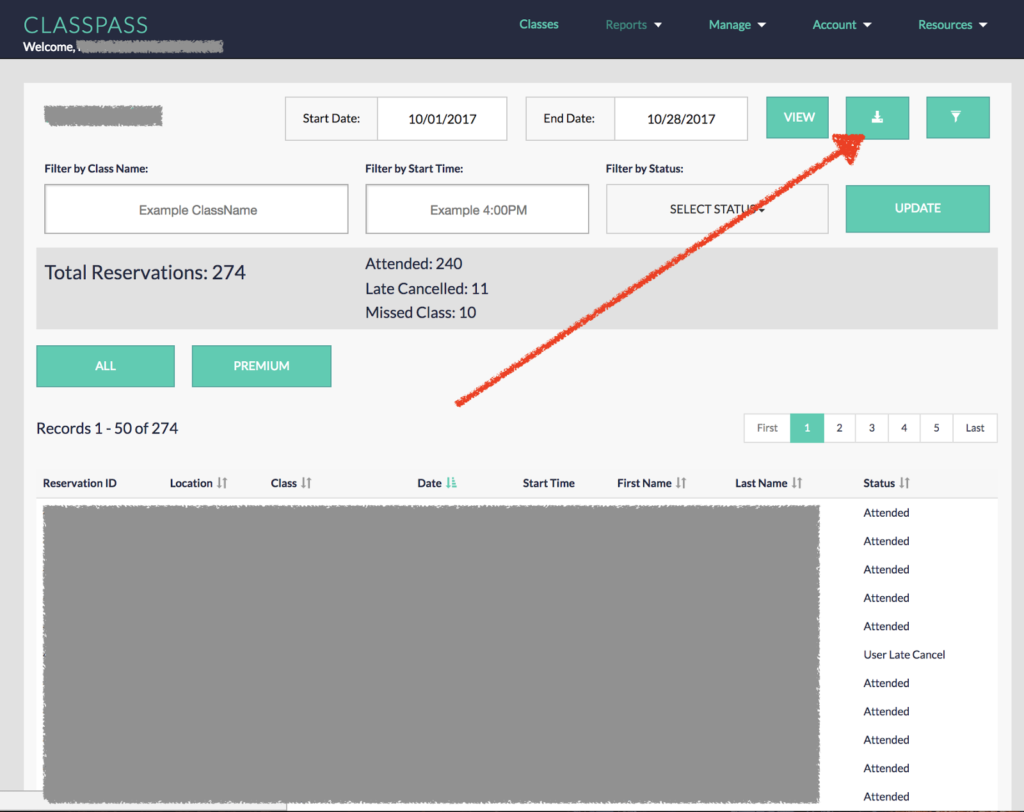
A list of your “die-hards”
If you have a larger business with a lot of members, you might also consider segmenting out your absolute die-hards.
I like to call this the VIP list. These people bring ten friends to class a month and are fanatic about your business. Keeping them happy and inspired is actually a great use of your time.
Again, you’re sitting on a gold mine
If you take action on even one of the strategies explained in this guide, you’ll attract more members and generate more revenue.
The key, however, is to take action.
It’s easy to read this, feel entertained and maybe even inspired, and then do nothing.
I challenge you to take one action TODAY from reading this guide that will grow your business.
And I always like hearing about kinds of promotions my readers come up with – so if you cook up something fun, drop me a line at nick@nickwolny.com.
Let’s DO this!

–Nick

